
RMS Olympic was a British ocean liner and the lead ship of the White Star Line's trio of Olympic-class liners. Olympic had a career spanning 24 years from 1911 to 1935, in contrast to her short-lived sister ships, Titanic and Britannic. This included service as a troopship during the First World War, which gained her the nickname "Old Reliable", and during which she rammed and sank the U-boat U-103. She returned to civilian service after the war, and served successfully as an ocean liner throughout the 1920s and into the first half of the 1930s, although increased competition, and the slump in trade during the Great Depression after 1930, made her operation increasingly unprofitable. Olympic was withdrawn from service and sold for scrapping on 12 April 1935 which was completed in 1937.

Mauretania was an ocean liner designed by Leonard Peskett and built by Wigham Richardson and Swan Hunter on the River Tyne, England for the British Cunard Line, launched on the afternoon of 20 September 1906. She was the world's largest ship until the launch of RMS Olympic in 1910. Mauretania captured the eastbound Blue Riband on the maiden return voyage in December 1907, then claimed the westbound Blue Riband for the fastest transatlantic crossing during her 1909 season. She held both speed records for 20 years.

Laconia was a Cunard ocean liner, built by Swan, Hunter & Wigham Richardson as a successor of the 1911–1917 Laconia. The new ship was launched on 9 April 1921, and made her maiden voyage on 25 May 1922 from Southampton to New York City. At the outbreak of the Second World War she was converted into an armed merchant cruiser, and later a troopship. She was sunk in the South Atlantic Ocean on 12 September 1942 by torpedoes. Like her predecessor, sunk during the First World War, this Laconia was also destroyed by a German submarine. Some estimates of the death toll have suggested that over 1,658 people were killed when the Laconia sank. The U-boat commander Werner Hartenstein then staged a dramatic effort to rescue the passengers and the crew of Laconia, which involved additional German U-boats and became known as the Laconia incident.

Imperator was a German ocean liner built for the Hamburg America Line, launched in 1912. At the time of her completion in June 1913, she was the largest passenger ship in the world, surpassing the new White Star liner Olympic.

Caronia was a Cunard Line transatlantic steam ocean liner. She was launched in 1904 and scrapped in 1932. In World War I she was first an armed merchant cruiser (AMC) and then a troop ship.

Sir Arthur Henry Rostron, KBE, RD, RNR was a British merchant seaman and a seagoing officer for the Cunard Line. He is best known as the captain of the ocean liner RMS Carpathia, when it rescued the survivors from the RMS Titanic after the ship sank in 1912 in the middle of the North Atlantic Ocean.
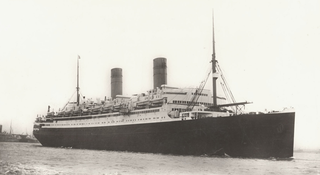
Homeric, originally launched as Columbus, was an ocean liner built for Norddeutscher Lloyd and launched in 1913 at the F. Schichau yard in Danzig, Germany. Columbus was ceded to Great Britain in 1919 as part of German war reparations. She was sold to the White Star Line in 1920, which named her Homeric. Her sister ship Hindenburg remained in German ownership and was renamed Columbus. Homeric was operated by White Star from 1922 to 1935.

Carmania was a Cunard Line transatlantic steam turbine ocean liner. She was launched in 1905 and scrapped in 1932. In World War I she was first an armed merchant cruiser (AMC) and then a troop ship.

Harold Thomas Cottam was a British wireless operator on the RMS Carpathia who fortuitously happened to receive the distress call from the sinking RMS Titanic on 15 April 1912. Cottam's decision to awaken Captain Arthur Henry Rostron and relay Titanic's message in spite of the scepticism of the officer on watch allowed Carpathia to arrive at the scene hours before any other ship and is "credited with saving hundreds of lives." He was a personal friend of the Titanic's wireless operators Harold Bride and Jack Phillips.
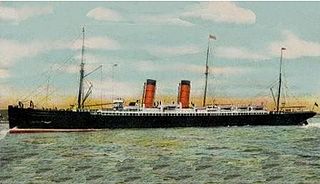
RMS Etruria was a transatlantic ocean liner built by John Elder & Co of Glasgow, Scotland in 1884 for Cunard Line. Etruria and her sister ship Umbria were the last two Cunarders that were fitted with auxiliary sails. Both ships were among the fastest and largest liners then in service. Etruria was completed in March 1885, twelve weeks after Umbria, and entered service on the Liverpool – New York route.
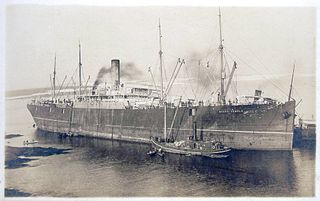
Mount Temple was a passenger cargo steamship built in 1901 by Armstrong Whitworth & Company of Newcastle for Elder, Dempster & Co Ltd of Liverpool to operate as part of its Beaver Line. The ship was shortly afterwards acquired by the Canadian Pacific Railway. It was one of the first vessels to respond to the distress signals of RMS Titanic in 1912.
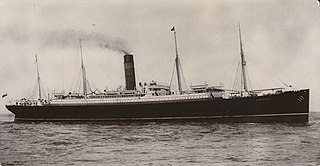
Carpathia was a Cunard Line transatlantic passenger steamship built by Swan Hunter & Wigham Richardson in their shipyard in Wallsend, England.

SS Noordam was a steam ocean liner that was launched in Ireland in 1901 and scrapped in the Netherlands in 1928–29. Holland America Line owned her throughout her career. From 1923 to 1924 Swedish American Line chartered her and renamed her Kungsholm.

SS Ypiranga was a cargo liner that was launched in Germany in 1908 for the Hamburg America Line (HAPAG). In 1919 the United Kingdom seized her for World War I reparations. In 1921 Anchor Line acquired her and renamed her Assyria. In 1929 the Companhia Colonial de Navegação (CCN) bought her and renamed her Colonial. In 1950 she was sold for scrap, but she sank off the coast of Scotland while being towed to a scrapyard.
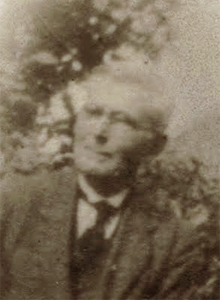
Herbert James Haddock was an English naval reserve officer and ship's captain, and was best known as the captain of the RMS Olympic at the time of the sinking of the Titanic. He was the first person to captain Titanic, overseeing the ship at Belfast while her delivery-trip crew was assembling there from 25 to 31 March 1912.
Ramón Alonso R. was a merchant steamship that was built in Scotland in 1898 and scrapped in Spain in 1959. Her original name was Montclair. She was renamed José Gallart in 1901, Balmes in 1911 and Ramón Alonso R. in 1929. Her first owner was the British Elder Dempster Lines, but she spent most of her career with a succession of Spanish owners. She was built as a transatlantic ocean liner with some cargo capacity, but in 1927 she was refitted as a cargo ship. In 1913, when she was called Balmes, the ship survived a serious cargo fire in mid-Atlantic.

Sir James Gordon Partridge Bisset, CBE, RD was a British merchant sea captain who served as Commodore of the Cunard White Star Line (1944–47). He documented his fifty-year sea career in a three volume autobiography: Sail Ho! My Early Years at Sea (1958); Tramps and Ladies – My Early Years in Steamers (1959) and Commodore – War, Peace and Big Ships (1961). In addition, Bisset authored Lifeboat Efficiency (1924) which became the primary text used by the British Merchant Marine until the Second World War for instructing merchant seaman in lifeboat utilization and handling, and Ship Ahoy ! : Nautical Notes for Ocean Travellers (c.1930), a treatise on shipboard operations for the edification of passengers. He served in or commanded Cunard liners including Carpathia, Caronia, Franconia, Mauretania, Aquitania, Berengaria, Queen Mary and Queen Elizabeth.

SS Prinz Adalbert was a twin-screw cargo liner that was launched in Germany in 1902 for Hamburg America Line (HAPAG). In 1914 the United Kingdom Admiralty seized her and renamed her Prince. In 1916 she was renamed Princetown. On 1917 she was transferred to the Compagnie de Navigation Sud-Atlantique and renamed Alesia. Later in 1917 a U-boat sank her.

SS Grampian was a transatlantic ocean liner that was built in Scotland in 1907 and scrapped in the Netherlands in 1925. She was operated originally by Allan Line, and later by Canadian Pacific Steamships. In the First World War she remained in commercial service but carried Canadian troops. In 1919 she survived a collision with an iceberg. In 1921 she was gutted by fire while being refitted. The refit was abandoned, and in 1925–26 she was scrapped.

SS Birma was a British-built transatlantic passenger ship. She was built in 1894 by Fairfield Shipbuilding and Engineering Company in Govan, United Kingdom, as Arundel Castle and later went through numerous ownership and name changes, including coming into the hands of the Russian American Line. In 1912, Birma was one of the ships to respond to the sinking of RMS Titanic. She was broken up in 1924 following acquisition by a German line after a liquidation sale.


















